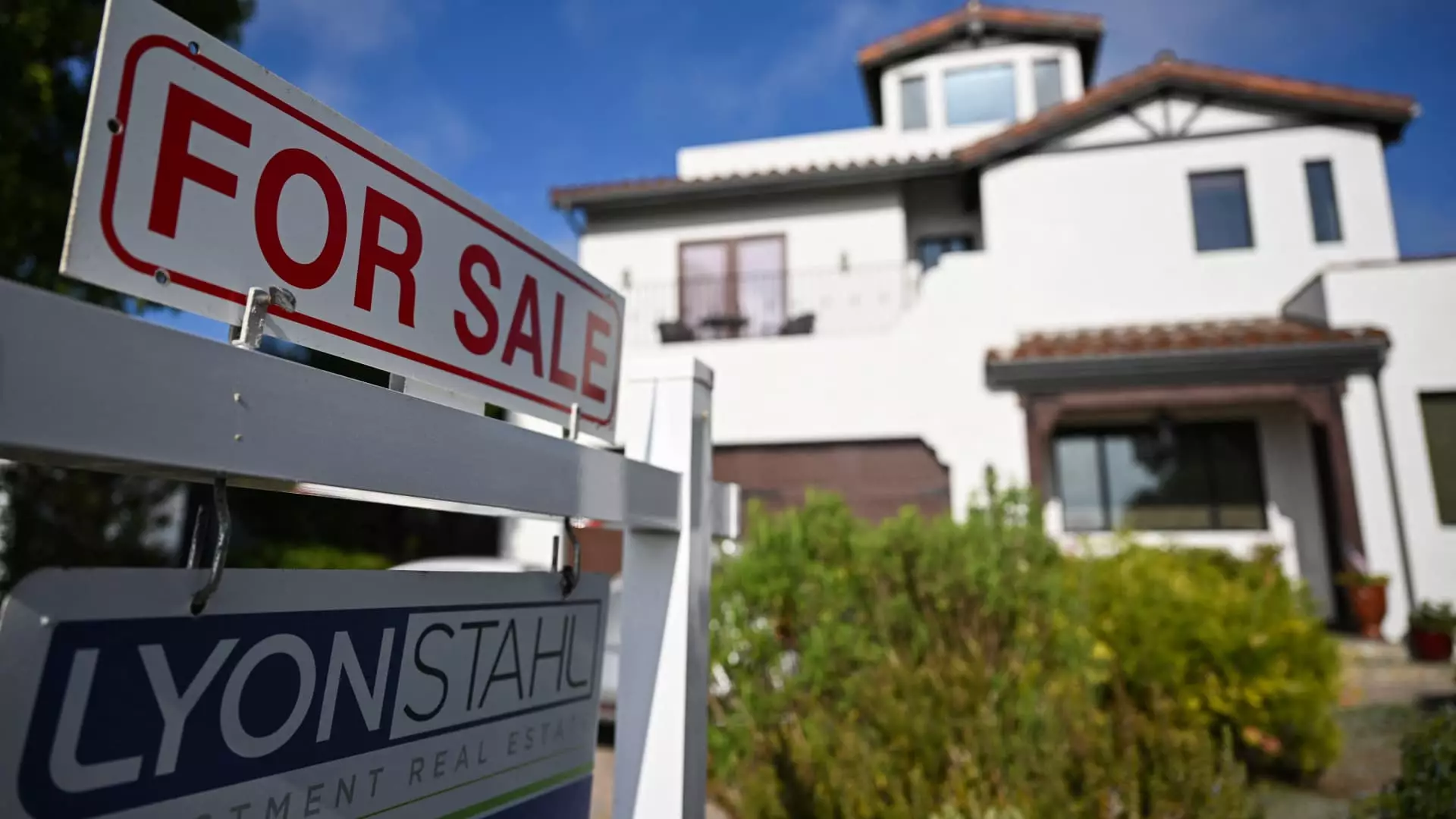Recent announcements about tariffs from the Trump administration have sent shockwaves through the financial world, leading to a noticeable drop in mortgage rates. With the average rate for a 30-year fixed loan dipping to 6.63%, it might seem like a moment of relief in an otherwise turbulent economic landscape. However, this optimism is misleading. The financial markets demonstrate a profound reaction to global trade tensions, with investors scrambling for the perceived safety of the bond market. But while a decline in mortgage rates might appear beneficial, we need to dig deeper to understand the underlying issues plaguing the housing market today.
Record Home Prices Amidst Increasing Costs
Despite the slight drop in mortgage rates, which typically gives prospective buyers a glimmer of hope, the reality is that home affordability continues to plummet. The average monthly payment for a typical U.S. home buyer has reached a staggering $2,802—an all-time high. This figure now reflects a troubling trend that is squeezing middle-class Americans out of the housing market. Home sale prices increased by 3.4% year-over-year, stressing that the market’s affordability crisis isn’t merely a transient phase; it’s the new normal.
Currently, around 70% of American households cannot afford a $400,000 home, illustrating a widening gap between what people can afford and what the market demands. With the estimated median price of new homes projected to hover around $460,000 by 2025, it’s alarming to see data indicating that upwards of 52 million households can only afford homes priced below $200,000. As the housing market evolves, potential buyers are increasingly left behind, struggling to even consider the prospect of homeownership.
A Market Tug-of-War: Supply vs. Demand
The dynamics of supply and demand have drastically shifted in recent months. While there is a slight increase in the availability of homes, this new stock often does not align with what many buyers can afford. Yes, the upcoming spring season has seen a 10% year-over-year increase in new listings and a staggering 28% rise in active listings, encouraging signs for inventory. Yet, this is a segmented distribution; the homes hitting the market are predominantly higher-priced, further aggravating the affordability crisis.
Additionally, the history of chronic underbuilding in the U.S. since the Great Recession exacerbates the situation. Even though some agents report an influx of listings, it feels more like a mirage than a solution. “Ready to list” often translates to those seeking to cash in at peak levels rather than provide affordable entries for first-time buyers. Those who are concerned about potential job security or commuting policies are not merely selling—they’re contributing to a trend that reflects a lack of confidence in stable, affordable housing options.
The Naysayer’s Dilemma: What Lies Ahead
As the spring buying season unfolds, it’s crucial to acknowledge the cracks appearing in the market. While various agents and forecasters like Danielle Hale from Realtor.com suggest the market is balancing, this doesn’t provide comfort. We’re witnessing homes on the market longer and a marked increase in price reductions—it’s an indication of a market grappling with its own contradictions. Sales are stagnating; pending transactions have fell by 5.2% compared to last year’s figures in the largest metropolitan areas. A strong indicator of potential trouble ahead, particularly in cities like Jacksonville and Miami, which have faced declines of over 15%.
This sluggish market isn’t purely an anomaly; it underscores critical economic concerns that reverberate through consumer sentiment. For buyers, the emotional toll of being shut out of the housing market combined with growing fears about the economy looms large. This predicament is exacerbated by rising inflation rates and shifting job markets, creating a perfect storm that many in the center-right political sphere recognize requires urgent attention. Sustainable homeownership should not be an impossible dream for millions, yet the current state of the market paints a dire picture of elitism and financial segregation within housing access.
It’s time we advocate for policies that bridge this gap—advocating for balanced economic growth while ensuring homeownership can remain a viable goal for all, not just the affluent few.

